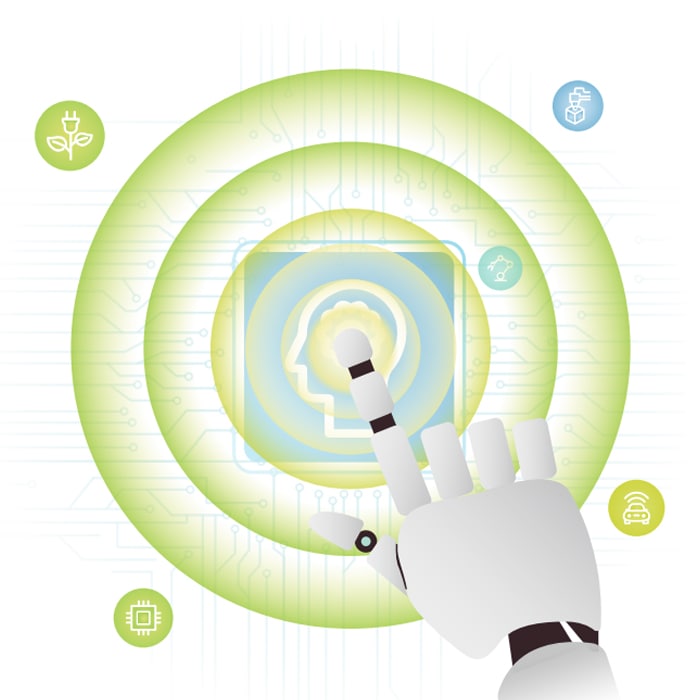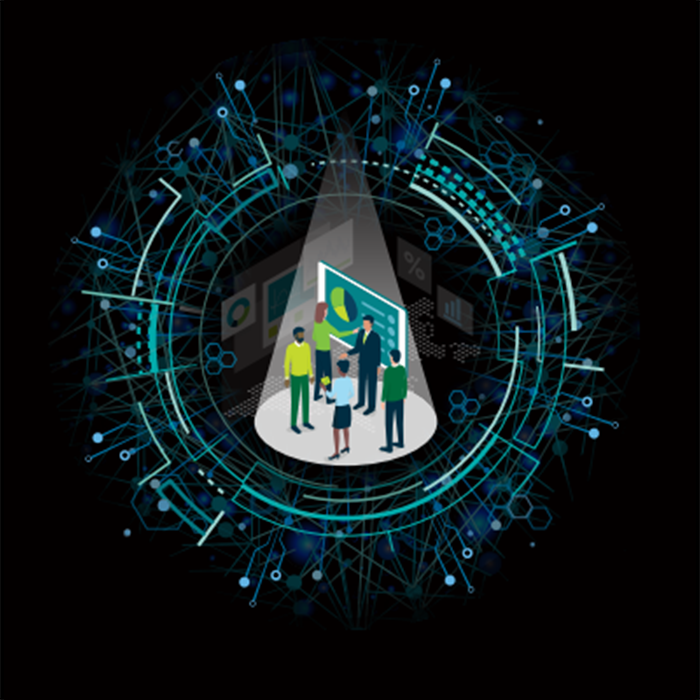Article

2022 Q3 Deloitte CFO Express
Issue No. 7
Published: 4 September 2022
Explore Content
- Play this episode
- Leaning on the financial lever
- 2022 government work report: Interpretations and industry outlook
- Tech trends 2022
- Issue one of the New era for Chinese globalization White Paper series : certainty and uncertainty of Chinese companies going global
- The sustainability imperative for CFOs
- SEC climate disclosure and assurance: What should U.S.-listed companies in prepare?
- Targeting procurement: Why CFOs should take direct aim at indirect spend
- Tax transformation trends series: Talents reimagined
With higher economic growth pressure in the second half of the year, the Chinese government has launched a series of measures to reboot the economy and support businesses. The measures intend to stabilize market expectations and restore confidence, through policy initiatives in areas including supply chain security, consumption and investment promotion, employment improvement, and support for enterprises to resume production. Whilst businesses leverage policy support, they also need to continuously build resilience and risk management to handle operational challenges such as digital transformation, cost surge due to supply chain disruptions, shortened strategic planning cycles, and talent shortages.
This issue features more tailored insights regarding the challenges companies are facing today, and offers both macro and company perspectives. The macro part includes the interpretations for Shanghai economic recovery and revitalization plans, and outlook on China's health ecosystem. It also explores companies' emerging risks brought by transitions in a post-pandemic era, such as new tools for smart manufacturing, budgeting and forecasting, talent development and third-party risk management under context of digital transformation. The findings from the latest Gen Z& Millennials survey are also discussed. We hope company executives find these excerpts instructive.
Chief Economist’s View |
|
Trends and Outlook |
|
Expertise and Practice |
|
Talent and development |
 Chief Economist's View
Chief Economist's View
Gradual comeback awaits in the second half
Deloitte Chief Economist, Sitao Xu, shares his perspectives on China's economic growth prospects in the second half of 2022. His main takeaways are:
- China's GDP expanded 2.5% year-on-year in the first half of 2022, making it more challenging to achieve the "around 5.5%" target set by the annual Two Sessions. With Covid-19 control measures becoming more precise, the economic prospects will improve in the second half of the year.
- In-depth reforms will help to improve mid-term economic growth, specifically, easing household registration and raising the retirement age to stabilize labor market, as well as promoting financial sector reform to diversify household wealth structure.
- The nationwide mortgage boycott reflects the issue of asset-liability mismatch at real estate developers. With healthy current account, high national savings rate and high public confidence for the banking sector, "Lehman crisis" and "Minsky moment" are not likely to occur in China.
- The dollar's strong position and interest rate hikes from major central banks will shrink policy space for targeted easing by PBoC. A more flexible RMB exchange rate could help sustain the economic recovery in the rest of 2022.

More information: Gradual comeback awaits in the second half
 Trends and Outlook
Trends and Outlook
Interpretations of Shanghai economic recovery and revitalization plans
In May 2022, the municipal government of Shanghai publishes <economic recovery and revitalization plans>, which mainly introduces resumption policies supporting businesses, maintaining the order of reopening, stabilizing trade and investment, as well as encouraging consumption and strengthening business environment. Deloitte has provided interpretations of these initiatives, to help our clients identify opportunities:
- Support industries and SMEs hit by Covid-19, and offer preferential policies for specialized and uniquely-positioned SMEs (“专精特新”)and new energy vehicle sector, and increase tax rebates and loan support for the manufacturing sector. For instance, automobile consumption is a key stimulus area, which includes a rebate of RMB 10,000 for consumers who upgrade their cars to new energy vehicles.
- Optimize cargo delivery and quarantine process to mitigate supply chain difficulties for foreign enterprises, strengthen communication with foreign executives, and build a regular mechanism for consultations and exchanges. In addition, introduce policies to encourage multinational companies to localize R&D, and simplify cross-border travel procedures for foreign employees.
- The ESG concept has been integrated into economic and social recovery plans, which focus on improving governance resilience in areas such as health and safety, employment and well-being, and urge companies to improve ESG strategy and management. For example, companies are encouraged to establish epidemic prevention system, enhance operational continuity and drive sustainable development.
- Improving supply chain capacity is the key to economic recovery, especially for companies in automotive, integrated circuits and biopharmaceuticals sectors. Some companies have already accelerated the deployment of a multi-layered supply chain risk management system and have leveraged digital tools to ensure the responsiveness of supply chain.
- A growing number of industries will become qualified for value-added tax (VAT) credit refund. Enterprises in Shanghai should prepare for refund assessment, while managing related compliance risks.

More information: Interpretations for Shanghai economic recovery and revitalization plans (Chinese version only)
New tools for Smart Manufacturing: automatic continuous optimization
The pandemic has served as a catalyst for smart manufacturing development, and many manufacturers have been accelerating automation, which now presents a key development window of expanded and deepened application of smart manufacturing. During the transformation, manufacturing companies still face challenges such as supply chain disruptions, process optimization, labor shortages, and ESG compliance. With deeper integration of industrial internet, 5G, big data, AI and other advanced technologies, smart manufacturing shows trends from the following five angles:
- Automation: add and program hardware to help eliminate time-consuming manufacturing process. Human-robot collaboration will become a future trend, as seen in the investment of collaborative robots to take on tedious, dangerous and repetitive tasks.
- Digitalization: apply data mining and analytics to data generated from manufacturing system in order to understand and solve root problems. For example, manufacturers leverage digital twin to present interactive processes and behaviours in order to optimize performance.
- Scale-up deployment: smart factory transformation has shifted from a single process to integrated solutions, such as investment in industrial internet of things that connect machines and automate processes.
- Ecosystem: connect the upstream and downstream parts of supply chain, form a synchronized supply chain ecosystem to optimize production capacity and flexibility.
- Decarbonisation: manufacturers are investing more resources in advancing sustainability, and actively adopting smart technologies to minimize environmental impact. Practices include optimizing and tracking energy consumption, enhancing operational safety and developing green products.
When digital technologies and governance become must-have tools for factory management, the concept of automatic continuous optimization gains momentum, as scaled-up digital transformation deployments and improved data analytics tools provide sufficient infrastructure. It involves technologies such as digital twin, deep learning and leverages smart devices to gain market insights, identifies the correlation between process parameters and find the optimal process parameter, and achieve flexible production scheduling. Through alleviating pain points in production development, manufacturing and supply chain management, automatic continuous optimization assists companies to realize cost and operation optimization in a sustainable way.

More information: New tools for Smart Manufacturing: automatic continuous optimization
China Health Ecosystem 2030 - A Scenario Analysis
The pandemic has highlighted the urgency of health care transformation to tackle issues such as under-developed diagnosis and primary care capabilities, strained funding, the widening gap between demand and supply, and disparities in the quality and accessibility of health care across China. According to Deloitte's research and interviews with thought leaders and industry executives, the future of health in China will feature six mega trends:
1. Tiered expansion of public and private health care infrastructure and services
- Public health institutions, hospitals, primary clinics having improved coordination mechanism for major disease prevention, control and primary care
- Expanded diagnostic infrastructure, e.g., point of care, and health care services, e.g., rehab and senior care services
2. Diversification of health care funding models and integration with care
- Reimbursement models will continue to evolve from more abrupt cost control measures to more sophisticated value-based measures
- Private funding models such as commercial health insurance and city-based health care insurance continue to increase their shares in health care expenditure
3. Formation of local ecosystems for breakthrough health care innovations and their industrialization
- Favorable policies have accelerated the growth of local innovation clusters, such as Bohai, Yangtze River Delta, Greater Bay, and Hainan BoAo.
4. Rapid shift of disease and health conditions with an aging and urbanizing population
- The upsurge of an aging population will create more chronic conditions and terminal illnesses
- Ongoing urbanization and changing lifestyles will create more lifestyle health conditions and diseases
5. Enhanced roles of consumers and patients in health care journey
- Dietary management is empowered by improved health awareness and concern over the safety in food, nutritional supplements and drugs.
- The increasing need for risk assessment and early intervention leads to the growing demand for personalized disease management
6. Digital, technology and data empowering smart health care
- Accelerated shifts to smart health care enabled by internet and new technologies, and a growing digital economy will lead to more innovative health care models
- 5G, wearable devices, AI and other disruptive technologies bringing more de-centralized, innovative health care models
Deloitte has mapped out four scenarios for the future of China's health ecosystem based on supply and demand dimensions – transformation of consumer needs and behaviors, extent and variety of market participation in health ecosystem. The central theme underlying these scenarios is the importance of placing the design of a compelling, innovative health care experience and empowering consumers at the heart of health care strategies. New business models are essential to preparations for this more customer-centric future of health, as data, technology, and analytics have become core competencies.
Graph: Four scenarios for China's health ecosystem in 2030


To learn more about the implication to ecosystem players under each scenario, please refer to the full report: China Health Ecosystem 2030- A Scenario Analysis
 Expertise and Practice
Expertise and Practice
The sustainability imperative for CFOs2021 Global Survey in Planning, Budgeting, and Forecasting
In 2021, Deloitte conducted a global survey regarding planning, budgeting and forecasting, basing off of 750 responses from 55 countries, covering a wide range of industries and organizations, including several Chinese companies. The survey was designed to understand the role of planning, budgeting and forecasting in enhancing performance management and decision-making. The survey covers 7 topics, in this article we will discuss key findings from the first 5 topics.
- 94% respondents do not currently use algorithmic forecasting. Lack of in-house expertise, resistance to acknowledge proven benefits and concerns over data quality have been highlighted as major roadblocks. Deloitte found that the leading organizations using algorithmic forecasting start with internal structured data before harnessing external and unstructured data, arrange trials before deciding whether to scale across organizations; and apply algorithmic forecasting in top-down planning and product-level forecasting.
- The majority of respondents say planning and reporting is an annual process looking over one-year time horizon and the bottom-up approach (72%) is the most popular approach for annual budget preparations. Organisations from different industries have differing levels of budgeting granularity depending on the nature of the business. Leading organisations are gaining further efficiencies as they continue to adopt reporting automation across the business.
- Over 60% of respondents are changing or planning on changing their organisations ways of working as a direct result of the Covid-19 impact, especially as plans, budgets and forecasts built upon prior assumptions, models and data were rendered unusable.
- 63% of respondents are aware of sustainable finance, with 34% expect it to impact upon planning, budgeting and forecasting processes, and of those, 64% expect the impact to occur before next year. Respondents within the energy and resources industry were slightly more aware of sustainable finance and its impact (81%) than those in other industries.
- Spreadsheets still dominate for planning, budgeting and forecasting but their use is declining. The majority of respondents produce management information using a mix of automated and manual methods (85%), and are increasingly seeking to leverage tools to provide self-service capability to enable timely decision making.

More information: 2021 Global Survey in Planning, Budgeting, and Forecasting
Global survey for third-party risk management
With the emergence of new Covid-19 variants, companies are taking longer to respond and recover from disruptions. Despite the pandemic, organizations have gained ground in adapting to digital ways of working and started to manage a new breed of risks. In 2021 third-party risk management ('TPRM') survey, Deloitte examines the pandemic's impact on the network of third-party relationships and explores how companies leverage new technologies to manage emerging risks in the digital age.
2021 key findings are:
- More than half of organizations faced one or more third-party risk incidents since Covid-19. Disruptions helped organizations realize the value of a more mature TPRM framework. Half of the respondents believe that they need to make at least some major investments to re-energize their TPRM programs.
- Focus areas for investments on TPRM in the year ahead are risk management process (49%), improving management information (41%) and technology-enabled solutions (34%). In 2021 almost half of organizations (49%) are implementing progressive changes to due diligence and monitoring processes, compared to 34% in 2020.
- Managing digital risk has become the most significant emerging risk in third-party management, with 71% of respondents citing it as a top priority. However, digital risk related to third parties is also the most common area of underinvestment across the various emerging risk domains, due to the multitude of digital risks and the lack of a consistent definition across organizations.
- Half of organizations feel under high pressure to save costs by continuing to outsource business activities, while only 18% of respondents believe they have the capability to insource previously outsourced business activities. Some organizations have started looking into the multiple tiers of their critical third-party relationships to assess the benefits of insourcing, while some organizations continue to outsource business by implementing additional risk management and resilience measures.

More information: Global survey for third-party risk management
Chinese globalization white paper: Tax considerations of overseas investments
In this series, Deloitte provides insights on the most prominent and urgent tax issues for Chinese companies making cross-border investments. Companies now face a much more uncertain external environment with accelerated global supply chain restructure, and a growing number of Chinese companies have extended supply chain overseas to establish their own regional or global value chain. During this process, companies going global will face a complex and diverse cross-border tax environment, so a holistic strategy should be actively explored and implemented.
Based on international tax theory and decades of client services in overseas finance and tax management, we have refined core tax considerations for cross-border investments as follows, to ensure a reasonable level of tax burden and to help companies going global devising a flexible tax-efficient strategy.
The core tax considerations for Chinese companies investing overseas can be summarized into two centers, i.e., tax operation management and tax efficiency management, and two dimensions, i.e., investing holding structure and business mode optimization:
Tax operation management: companies going global should standardize overseas systems and processes in order to be tax compliant with local jurisdictions and identify tax risks early. When building overseas tax practices, considerations shall include study of local tax laws, set-up of standardized global tax declaration and monitoring system, and establishment of a long-term tax risk management mechanism.
Tax efficiency management: first, companies can optimize tax efficiency by aligning and analyzing key metrics, such as EIT rates and other tax categories. Second, rely on data analytic tools and systems to assess tax burden of each tax category in comparison to industry peers and benchmark against international best practices, which will then help companies evaluate and optimize tax efficiency of investment holding and operations. Finally, tax efficiency management shall also cover compliance and transfer pricing so as to minimize tax liabilities and avoid any penalties and fines imposed by overseas tax authorities.
The vertical dimension revolves around the set-up of overseas investment holding structure. Companies shall perform analysis of potential investment holding structure based on local tax laws, tax treaties and OFDI tax policies. Optimize tax efficiency of dividend income and income from equity transfer, and claim benefits from tax treaties based on tax residency and identification of beneficial owners.
The horizontal dimension pertains to business model optimization, spanning across supply chain management, personnel management, financing arrangement and intellectual property planning and so on.

More information: Chinese globalization white paper: Tax considerations of overseas investments (Chinese version only)
 Talent and development
Talent and development
Crunch time series – The finance workforce in a digital world
The technology coming into Finance is changing what humans do and how they do it, but that doesn't necessarily mean wholesale workforce changes. A growing number of CFOs realize that shifts require aligning today's Finance talent to tomorrow's technologies, exploring potential from both sides, and building finance teams that fulfill financial and regulatory requirements. Here are a few major trends of how talent and technology are working together:
- Human+ machines: Technology without talent means digitalizing finance can fail, CFOs should motivate finance teams to make the change to deliver tech-enabled work
- Present + future: The value of digitalized finance still comes down to insights generation, which assists stakeholders in making informed decisions. CFO should revisit expectations and deliverables and reimagine talent sourcing to evolve with the digital world
- Build + borrow + buy: future workforce solutions will consist of upskilling finance team, borrowing resources from other parts of a business and buying in workforce resources.
- Fits + starts: Finance talent shall gain a breadth of experience in finance, technology, and business, and be given the chance to work in different areas of Finance, across different geographies and with different technology platforms.
- Drive + thrive: CFOs can create mentoring program, encourage rotations and add AI to recruiting sources to develop talent. They can also consider hiring talent who are allowed flexible work arrangements.
- Finance + others: Finance team should consider working with HR, IT, risk and other internal departments to accelerate improvements in the finance workforce.

More information: Crunch time series – The finance workforce in a digital world
2022 Deloitte Global Gen Z & Millennial Survey: Striving for balance, advocating for change
Deloitte's Gen Z and Millennial Survey connected with 14,808 Gen Zs and 8,412millennials across 46 countries. This year's survey found that Gen Zs and millennials are deeply worried about the state of the world. They are struggling with financial anxiety, while trying to invest in environmentally sustainable choices.
- Gen Zs (29%) and millennials (36%) selected cost of living (e.g., housing, bills) as their greatest concern. Many Gen Zs and millennials are redefining their working patterns, and as many as 43% of Gen Zs and 33% of millennials have a second part-or-full-time job.
- Loyalty levels are on the rise among millennials and Gen Zs, but respondents are particularly eager to leave some public-facing industries (e.g., consumer, retail, energy /mining) within two years. Their level of satisfaction with employers' commitment to societal impact, diversity and inclusion, and sustainability will have a direct impact on job loyalty.
- The vast majority of Gen Zs (75%) and millennials (76%) would prefer working patterns where they either split their time between remote and on-site work or work from home entirely, they see flexible working as an important strategy to enable better work/life balance.
- Gen Zs and millennials are expecting businesses and governments to do more to fight climate changes, as only 15% of Gen Zs and 14% of millennials strongly agree that business are taking substantive actions. Gen Zs and millennials want to see their employers invest in visible, everyday actions where they have an opportunity to be directly involved.
- High stress levels are becoming more common for Gen Zs and more pronounced among women, compared to their millennial counterparts. 46% of Gen Zs say they are stressed or anxious all or most of the time, and concerns around financial security rank as the top key factor driving stress levels.
- Burnout level is a key retention issue for employers, 44% of Gen Zs and 43% of millennials say that many people have recently left their organizations due to the pressure of their workloads. Although organizations are now focused on mental health, but it has not translated to tangible positive changes.
Contact us
If you need any further information, please feel free to reach out to your Deloitte contact person, or reach out to us via the following contact details.
Norman Sze
Vice Chair
Deloitte China
Phone: +86 10 8512 5888
Email: normansze@deloitte.com.cn
Maggie Yang
Partner
Finance & Performance
Deloitte Consulting
Phone: +86 10 8520 7822
Email: megyang@deloitte.com.cn
Bo Sun
Senior Manager
The CXO Program
Deloitte China
Phone: +86 10 8512 4866
Email: bsun@deloitte.com.cn
Explore Content
- Play this episode
- Leaning on the financial lever
- 2022 government work report: Interpretations and industry outlook
- Tech trends 2022
- Issue one of the New era for Chinese globalization White Paper series : certainty and uncertainty of Chinese companies going global
- The sustainability imperative for CFOs
- SEC climate disclosure and assurance: What should U.S.-listed companies in prepare?
- Targeting procurement: Why CFOs should take direct aim at indirect spend
- Tax transformation trends series: Talents reimagined

